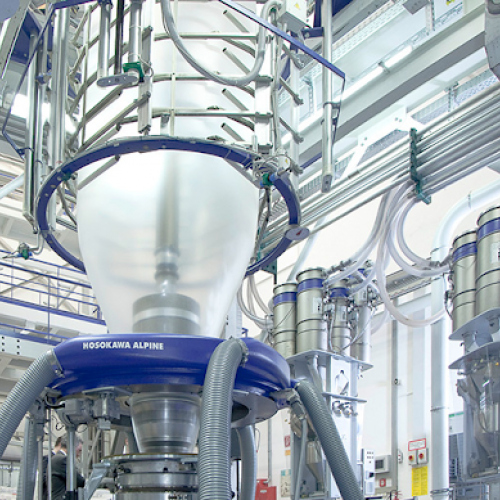Bột màu công nghiệp là gì? Ứng dụng trong công nghiệp hiện nay
Ngày nay, việc ứng dụng bột màu công nghiệp ngày càng được chú trọng, đặc biệt là các ngành sơn, nhựa, dệt may, phân bón… Việc lựa chọn loại bột màu tốt, phù hợp sẽ là một phần quan trọng quyết định đến chất lượng đầu ra của doanh nghiệp. Vậy hôm nay chúng ta cùng nhau đi sâu tìm hiểu về sản phẩm này, để bỏ túi những kinh nghiệm khi lựa chọn nhé.
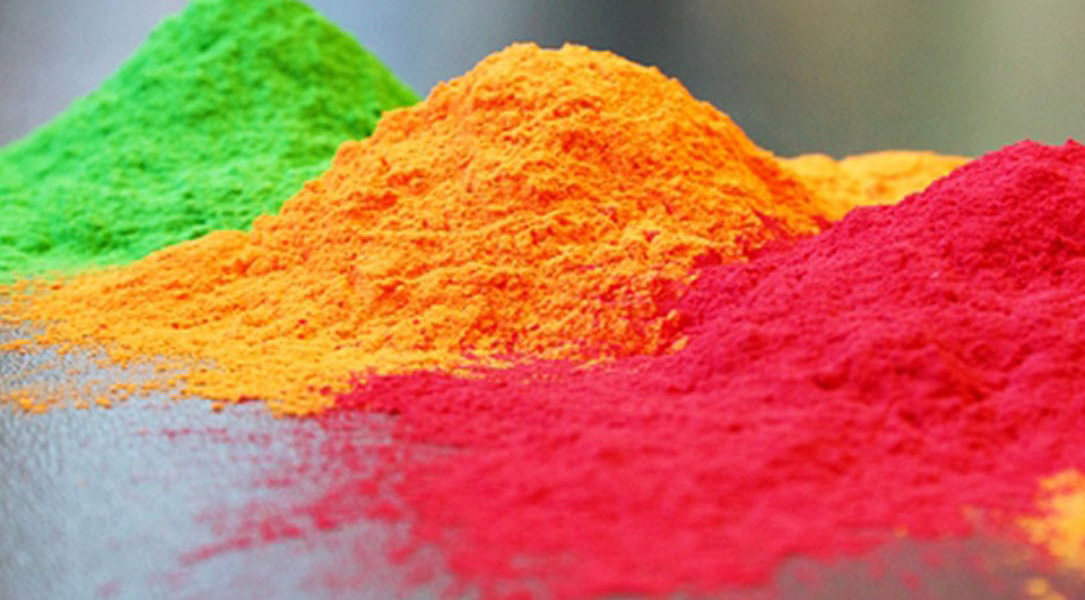
Khái niệm Bột màu công nghiệp:
Bột màu công nghiệp là những chế phẩm hóa học, được nén thành bột từ chất tạo màu. Chúng có tính phân tán cao và không hòa tan trong môi trường phân tán, được sử dụng bằng cách trộn với các dung dịch như sơn, nhựa ... để tạo màu cho sản phẩm.
Phân loại: Bột màu công nghiệp có 2 loại chính như sau:
1. Chất màu hữu cơ:
các hợp chất rắn dạng bột tạo ra các màu sắc khác nhau. Bao gồm họ:
- Sắc tố azo (-N = N-): chúng được sử dụng nhiều nhất trong ngành nhựa do đặc tính tan hoàn toàn trong nhựa. Tuy nhiên, azo có nhược điểm là dễ di dịch nên thường kết hợp với các ion kim loại hoặc nhóm chức như amit (-NHCO-) để tăng khả năng chống di dịch. Màu thông dụng: vàng, cam, đỏ.
- Sắc tố phthalocyanin [-C6H4 (CN) 2)]: Thường được gọi là phthalocyanin đồng (phthalocyanin đồng). Một số ưu điểm nổi bật của hình thức này là: bền với thời tiết, chịu nhiệt tốt, độ linh động tiêu chuẩn, độ chua và kiềm tiêu chuẩn. Do đó, sắc tố phthalocyanin cũng được sử dụng rộng rãi trong nhiều ngành công nghiệp. Màu sắc thông dụng: xanh lam, xanh lá đậm.
- Pigment Antraquinon: Nổi bật nhất trong họ này là Alizarin (hợp chất màu đỏ cam, là những tinh thể phát quang lấp lánh). Họ Antraquinone được sử dụng rộng rãi trong ngành dệt may.
- Bột màu nhuộm: Do có tính di động nên thường dùng trong các loại nhựa có nhiệt độ chuyển thủy tinh cao hơn nhiệt độ phòng như PS, PMMA, uPVC.
Ưu điểm: Bột màu hữu cơ có đặc điểm là trong, tươi và độ bền màu cao (ổn định nhiệt độ, bền kiềm, bền axit ...)
Nhược điểm: Giá thành tương đối cao so với bột màu vô cơ. Ngoài ra, nó dễ bị oxy hóa dưới ánh sáng, dễ bị ảnh hưởng bởi các yếu tố thời tiết.
2. Chất màu vô cơ:
là kim loại đen hoặc muối kim loại không tan. Bao gồm: trắng (TiO2), đen (đen carbon), bột màu vô cơ ...
Điôxít titan (TiO2) màu trắng . Trong ngành công nghiệp nhựa, TiO2 được sử dụng rất rộng rãi, có hai loại: ẩn và không ẩn.
+ Bột trắng không ẩn: Có chiết suất thấp nên khả năng tạo độ mờ kém, dùng làm chất độn hoặc chất làm đầy, giá thành tương đối rẻ. Các chất trắng không che giấu thường được sử dụng là canxi cacbonat, bột talc, đất sét và silica.
+ Bột ẩn màu trắng: Có chiết suất cao, có khả năng tạo độ mờ đục trong sản phẩm nhựa. Thành phần quan trọng nhất là TiO2 vì nó có tính hấp thụ mạnh bức xạ UV nên có ưu điểm là tạo độ mờ và màu trắng cao (phản xạ cực đại, hấp thụ tối thiểu), chống lão hóa tốt và không độc. Ngoài ra, còn có một số sắc tố trắng ẩn trong thương mại khác như: Kẽm oxit (ZnO), Kẽm sulfit (ZnSO3), lithopon (hỗn hợp ZnS và BaSO4), anthony oxit ...
- Màu đen: Nổi bật nhất là màu đen Carbon (đen than). Nó là chất màu đen quan trọng nhất, được sử dụng rất phổ biến trong công nghiệp chất dẻo (sau TiO2). Muội than có độ bền màu cao, khi kết hợp với chất hấp thụ tia cực tím oxy hóa nhiệt, chịu thời tiết, đặc biệt được sử dụng trên nền nhựa LDPE. Ngoài ra, muội than có thể góp phần cải thiện độ dẫn điện hoặc cách điện của polyme. Đặc biệt, giá thành của gam màu này tương đối thấp so với mặt bằng chung.
- Bột màu vô cơ: Có các loại sau:
+ Oxit sắt: là chất màu quan trọng nhất trong hệ sắc tố vô cơ. Có các màu từ vàng, đỏ đến nâu, đen. Loại này được sản xuất từ quặng tự nhiên hoặc tổng hợp. Chúng bao gồm: Oxit sắt màu đỏ (được coi là Fe2O3 ở dạng tinh thể), oxit sắt màu vàng [hydroxit oxit - FeO (OH)], oxit sắt màu nâu (hỗn hợp FeO và Fe2O3).
Màu sắc của oxit sắt được phân biệt bởi độ bền lão hóa, vẻ ngoài mờ đục, khả năng chống tia cực tím tuyệt vời và chi phí thấp. Tuy nhiên, độ đậm của màu và độ tươi kém nên việc sử dụng còn hạn chế.
+ Crom oxit (Cr2O3): thuộc loại oxit đơn chất có màu xanh đen, khả năng nhuộm màu yếu, bền với nhiệt nhưng không bền.
+ Oxit pha hỗn hợp: bền nhiệt, bền với thời tiết, bền màu và độ tươi tương đối. Một số màu phổ biến: xanh lam aluminat coban, vàng titan antimon.
- Bột chì cromat: dải màu từ xanh - vàng đến vàng - đỏ. Loại bột này cho màu sắc tươi sáng, bền với thời tiết. Được sử dụng chủ yếu trong ngành sơn.
- Ultramarrine Blue: Một dạng phức hợp của natri aluminosilicat natri zeolytic, nhẹ và bền với nhiệt và hơi bền với axit. Được sử dụng rộng rãi, có màu xanh đỏ rất tươi trong nhựa.
Ưu điểm: Bột màu vô cơ thường bền dưới ánh sáng, thời tiết, chịu nhiệt cao, bền với dung môi… Giá thành rẻ hơn hữu cơ.
Nhược điểm: màu không tươi sáng như sắc tố hữu cơ.
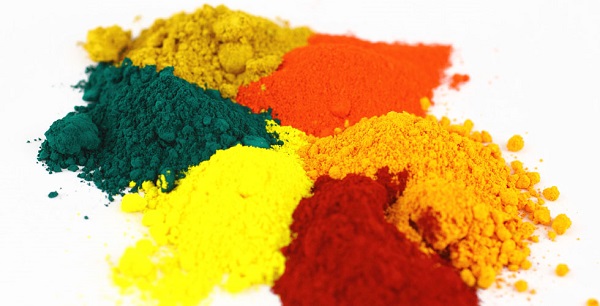
Một số chất màu công nghiệp khác:
Ngoài loại bột màu vô cơ và hữu cơ trên, còn có một số loại màu đặc biệt có thể kể đến như:
- Màu kim loại: quan trọng nhất là dựa trên các mảnh nhôm phân tán mịn, chúng được sử dụng đồng thời với màu kim loại hoặc kết hợp với sắc tố hữu cơ để tạo ra hiệu ứng kim loại mới.
- Màu ánh kim thường được phân tán trước trong chất hóa dẻo lỏng hoặc nhựa cây vì các vảy nhôm khô có xu hướng nổ. Khi phân tán màu ánh kim vào nền polyme, lực cắt cần được giảm thiểu để tránh đứt gãy hoặc biến dạng cặn làm giảm hiệu ứng màu sắc.
- Màu huỳnh quang: tính chất đặc trưng là khả năng chuyển đổi tia UV thành màu nhìn thấy được. Màu này có sắc thái rất rực rỡ nhờ mức độ phản xạ ánh sáng rất cao.
- Màu xà cừ: quan trọng nhất là những mảnh mica mỏng được phủ một lớp TiO2 có tác dụng phản xạ một phần và một phần truyền qua ánh sáng tới. Sự phản chiếu đồng thời của nhiều lớp định hướng tạo ra một màu đặc trưng của ngọc trai. Khi độ dày của hạt phù hợp, màu sắc được tạo ra do giao thoa ánh sáng. Khi trộn vào nhựa, tốc độ trượt phải phù hợp để tránh phá vỡ cấu trúc cặn.
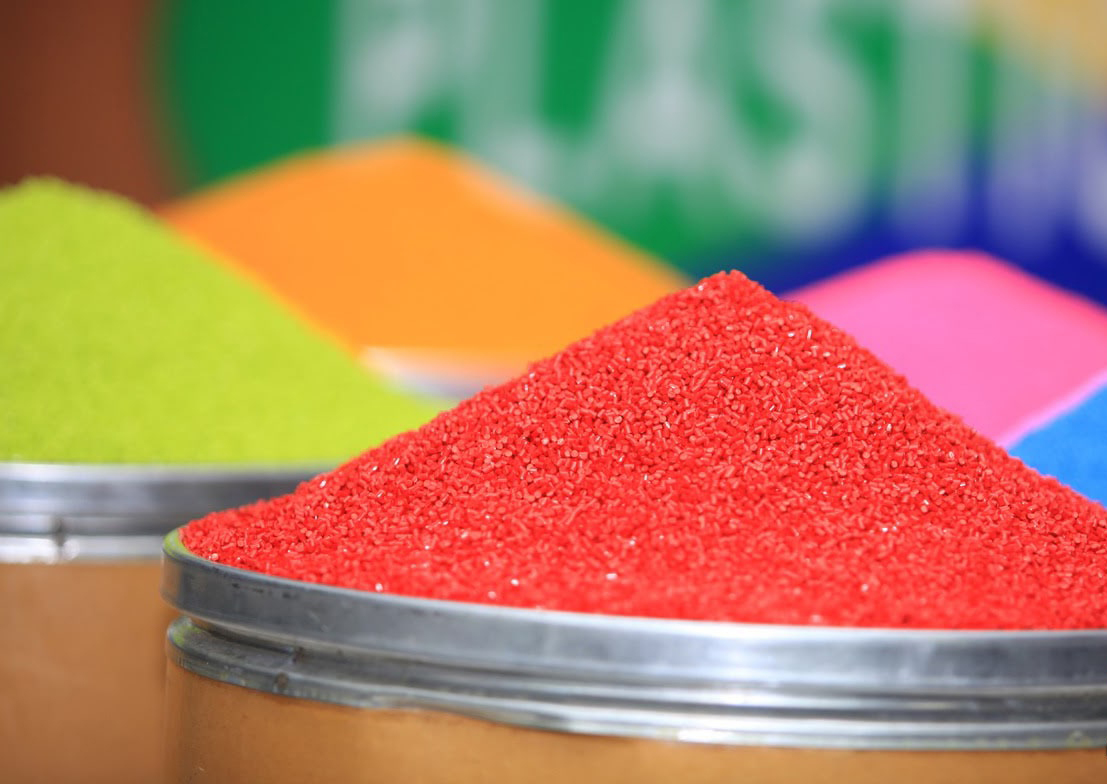
Ưu điểm của bột màu công nghiệp
Hiện nay, có rất nhiều loại màu công nghiệp được sản xuất ở các dạng khác nhau: dạng bột, dạng sáp, dạng nước… nhưng dạng bột vẫn được ưa chuộng hơn cả vì có nhiều ưu điểm vượt trội như:
- Dễ sử dụng:
Vì là dạng bột nên khi sử dụng chỉ cần trộn với phẩm màu mà không cần pha chế phức tạp, không cần chuyên môn quá sâu để thực hiện bước này.
Màu dạng bột rất dễ khắc phục nếu pha sai. Nếu màu quá đậm, chỉ cần pha thêm dung môi tạo màu (sơn, men, nhựa,…). Còn nếu màu nhạt thì chỉ cần cho thêm bột đến độ ưng ý là được. Lợi thế hơn những loại màu khác, nếu pha sai sẽ phải sửa rất khó khăn, thậm chí bỏ toàn bộ thành phẩm đó đi.
- Dễ dàng bảo quản và vận chuyển:
Các loại màu công nghiệp hiện nay phải bảo quản khá phức tạp. Màu dạng sáp, nước,… cần bảo quản trong đồ đựng cẩn thận, cầu kỳ. Thế nhưng bột màu công nghiệp lại khác. Bạn chỉ cần đựng trong các hộp nhựa, để nơi khô thoáng, tránh ánh sáng (đối với bột hữu cơ) là được. Sản phẩm lên màu kém.
Chưa kể, màu công nghiệp còn rất dễ dàng để vận chuyển. Bạn cũng có thể mang sản phẩm đi các nơi mà không sợ quá trình vận chuyển làm bột bị biến chất. Nhiều loại màu dạng dung dịch khi di chuyển có thể làm tách nước, tách dầu hoặc các thành phần phản ứng với nhau. Thế nhưng với dạng bột thì vấn đề này sẽ được hạn chế tối đa.
- Giá thành rẻ:
Trong số các loại màu công nghiệp, bột màu có giá thành rẻ nhất. Khách hàng mua sản phẩm để sử dụng mà không sợ bị đôn giá sản phẩm. Nếu cần mua để sử dụng số lượng ít, dùng cho doanh nghiệp thì giá bán lẻ cũng vô cùng hợp lý.
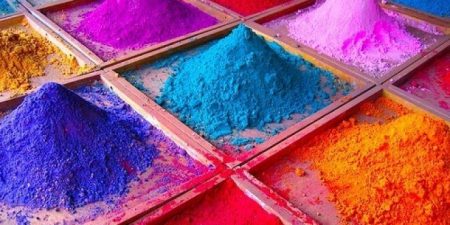
Lưu ý khi chọn bột màu công nghiệp:
Chúng ta vừa tìm hiểu tổng quan và chi tiết về bột màu công nghiệp hiện nay. Câu hỏi đặt ra là: Làm cách nào để tôi có thể tối ưu hóa lựa chọn màu này? Để có thể đưa ra câu trả lời xác đáng nhất, chúng ta cần lưu ý những điều sau:
- Lựa chọn theo nhu cầu của bạn: Mỗi loại bột có ứng dụng khác nhau. Vì vậy điều kiện tiên quyết là bạn phải biết sử dụng màu nào cho sản phẩm nào, tránh lãng phí.
- Đủ số lượng: Theo thói quen, khách hàng thường sẽ mua với số lượng lớn để có giá hợp lý. Tuy nhiên, điều này rất dễ gây lãng phí trong quá trình sử dụng.
- Nhà cung cấp: Hiện nay trên thị trường có rất nhiều loại bột màu công nghiệp tràn lan. Để có thể mua được sản phẩm đạt tiêu chuẩn chất lượng thì việc tìm được đơn vị cung cấp uy tín là điều vô cùng cần thiết.
Sunrise Colors Việt Nam với gần 20 năm kinh nghiệm trong nghề, chúng tôi tự hào là nhà sản xuất và phân phối uy tín được khách hàng tin tưởng trong suốt thời gian qua. Với đội ngũ kỹ thuật có kiến thức chuyên sâu về sản phẩm, chúng tôi sẽ tư vấn cho bạn một cách tối ưu và hợp lý nhất.
CÔNG TY TNHH SUNRISE COLOURS VIỆT NAM
Trụ sở chính: Toà CT2A, Chung cư Gelexia Riverside, 885 Đường Tam Trinh, Phường Yên Sở, Thành phố Hà Nội.
Chi nhánh miền Nam:
54 Đường số 5, KP3, P. An Lạc, Tp. Hồ Chí Minh
Địa chỉ nhà máy: Thị trấn Phú Minh, Huyện Phú Xuyên, Thành phố Hà Nội
Điện thoại: 02436452586
Email: sales1@sunrisecolour.com
Trang web: http://sunrisecolour.com
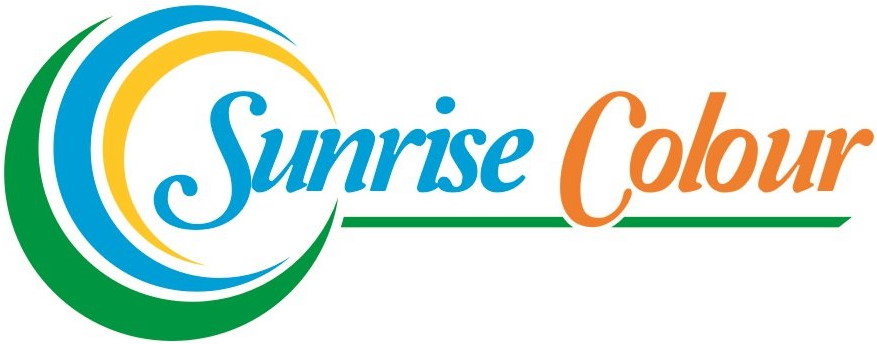







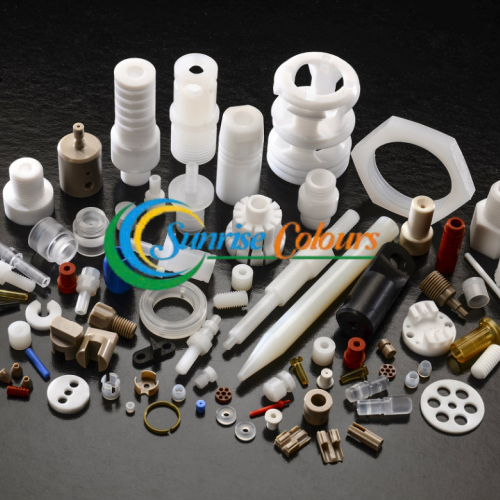
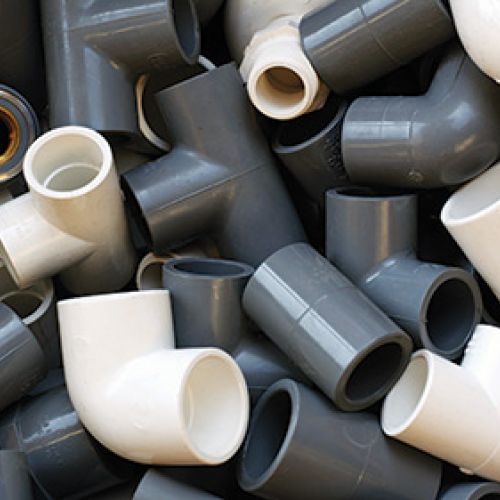
.jpg)
